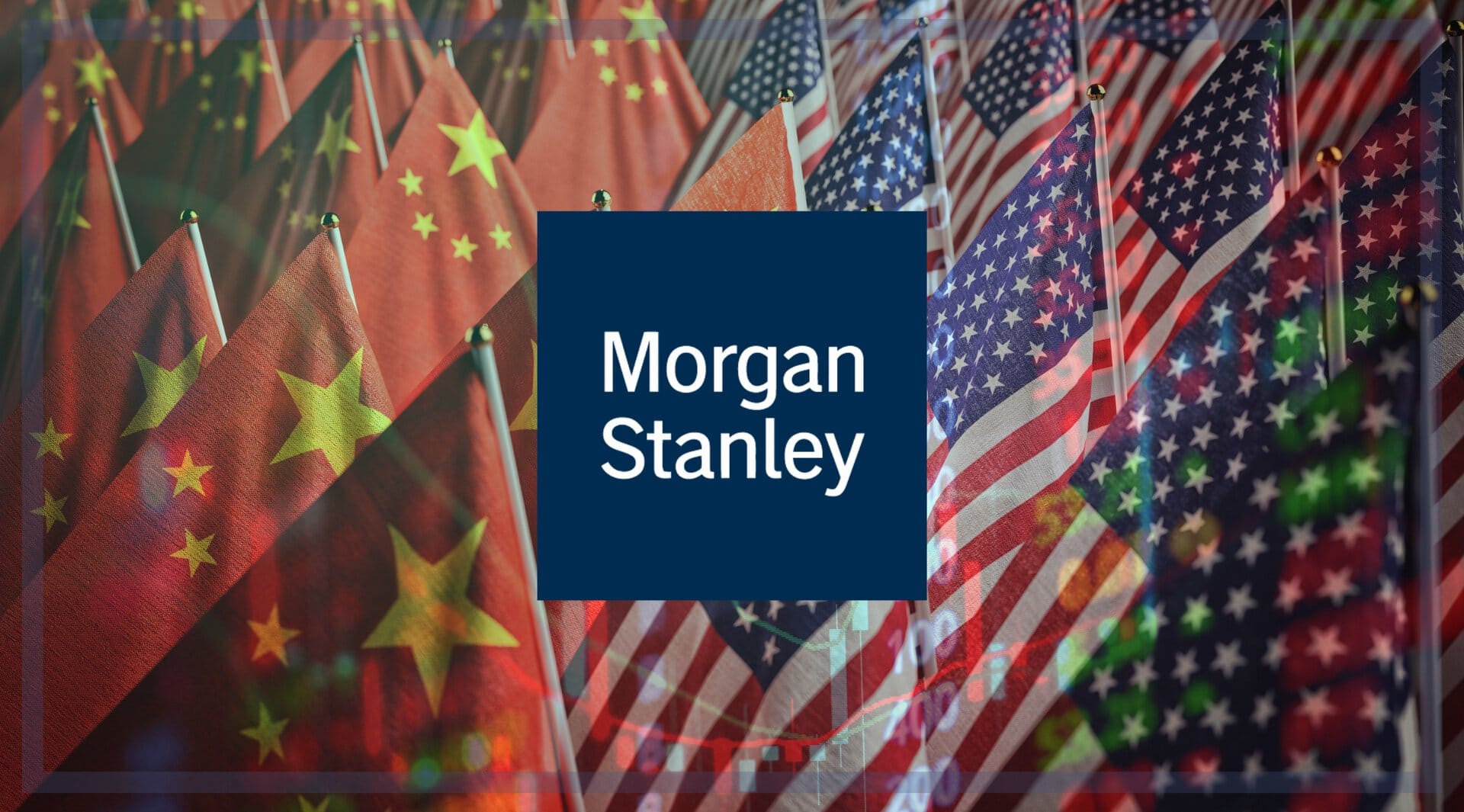Morgan Stanley recently got approval to operate in China’s futures market, which is a big step for the US financial giant. This move aligns with China’s ongoing efforts to open its financial markets to foreign participation. The China Securities Regulatory Commission (CSRC) granted Morgan Stanley Futures (China) a license, making it the second major US bank to enter China’s derivatives market, following JPMorgan Chase & Co.
With up to $54.1 billion in revenue in 2023, Morgan Stanley sees China as a chance to find new growth outside the U.S. and Europe, where markets aren’t growing as quickly. As CEO James Gorman once said, “China is a gift that keeps giving to world economic growth.”
Right now, China’s futures market has demonstrated robust growth, with a total transaction value reaching 425.29 trillion yuan ($59.25 trillion) during the first three quarters of 2023, marking a 6.13% year-on-year (YoY) increase. By moving into this market, the bank hopes to attract both big investors and individual clients looking to diversify and maybe even score higher returns. Morgan Stanley’s entry into China is part of a bigger shift in its strategy, aiming for a global reach and stronger ties with Asia’s financial sector.
Morgan Stanley traders and bankers joined the rest of their Wall Street rivals in posting better-than-expected revenue, fueling a 32% profit surge for the third quarter and sending the shares up the most in almost four years. #investmentbankinghttps://t.co/au3a1ZCnJG
— #DisruptionBanking (@DisruptionBank) October 17, 2024
Being one of the few US banks to secure this approval gives Morgan Stanley a head start over other big banks. The timing couldn’t be better, as global investors are increasingly interested in Asia. A 2021 survey by Economist Impact, commissioned by Invesco, found that 64% of global asset owners planned to increase their allocations to Chinese investments in the following 12 months. Morgan Stanley’s move could give it an edge in both Asian and Western markets.
Why China and Why Now?
China has been opening up its markets for foreign investment, and Morgan Stanley is seizing this opportunity. In 2022, the trading volume in China’s futures market reached 133.04 trillion yuan (about $19.0 trillion), according to the China Futures Association. This huge activity shows a growing demand for futures contracts, where investors make deals to buy or sell assets at a set price in the future.
Chinese Premier Li Qiang said at the World Economic Forum’s Annual Meeting of the New Champions (AMNC), “We have the confidence and capability to achieve the rapid growth of new industries and new drivers has buttressed the sound and sustained development of the Chinese economy.”
China’s economy, while slower than it used to be, is still projected to grow around 5% in 2024. That’s higher than the US and Europe, where growth is only around 2%. By expanding in China, Morgan Stanley spreads its revenue sources, relying less on slower Western markets. This diversification is smart, as it helps the bank balance out any issues in the U.S. or Europe.
Morgan Stanley is advising investors against buying the dip in Chinese stocks, warning that foreign funds may keep selling unless there is further policy easing and sentiment is likely to remain fragile. #Chinahttps://t.co/NinHtVHAst
— #DisruptionBanking (@DisruptionBank) October 20, 2023
Another reason Morgan Stanley is moving into China now is because other big banks, like Goldman Sachs and JPMorgan, are already entering the Chinese market. A report by Boston Consulting Group in 2023 forecasts that the global fintech industry will grow sixfold to reach $1.5 trillion in revenue by 2030, with the Asia-Pacific region, including China, leading this expansion. Getting in early helps Morgan Stanley grab market share before it becomes too crowded with competitors.
China has also made recent changes to its rules, allowing more foreign investment. In 2022, China lifted several restrictions on foreign ownership, particularly in the automotive, banking, and insurance sectors, allowing foreign firms to have greater control over their operations. Notably, in February 2023, the China Securities Regulatory Commission (CSRC) approved Morgan Stanley Investment Management’s acquisition of a full controlling stake in its mutual funds joint venture, Morgan Stanley Huaxin Funds. This shift shows that China wants foreign capital, giving Morgan Stanley an opportunity it couldn’t ignore.
Morgan Stanley’s Focus: Commodities and Futures
Morgan Stanley’s plan focuses on two main areas: commodities and financial futures. Commodities, like oil, metals, and agricultural goods, are essential for China, the world’s largest importer of raw materials.
“The continuing growth and opening up of China is unprecedented […] it will become the biggest economy,” Nicolas Aguzin, CEO of Hong Kong Exchanges and Clearing (HKEX) told delegates at the London Metal Exchange (LME) seminar. “This is where the action is.”
In 2023, China’s imports of goods were valued at approximately $2.56 trillion, representing a 5.5% decrease compared to the previous year. By entering the commodities futures market, Morgan Stanley can tap into an area with steady growth and help investors manage risks in these critical resources.
China’s exports soared in October and its trade surplus ballooned, official data showed on Thursday, just days after Donald Trump won the US presidential election with promises of sweeping tariffs to suppress imports from #China.https://t.co/ASl0I2odYJ
— #DisruptionBanking (@DisruptionBank) November 7, 2024
In the financial futures sector, Morgan Stanley plans to offer products like stock index futures and interest rate futures, which help investors manage market ups and downs. As of September 2024, China’s stock market capitalization was approximately $12 trillion, while, in 2023, China’s futures market recorded a trading volume of 568 trillion yuan (approximately $79.92 trillion), marking a 6% increase from the previous year. Morgan Stanley’s expertise could help it offer more advanced products to Chinese investors, who are eager to manage risk and diversify their portfolios.
The bank’s focus on commodities and financial futures is also timely because of global inflation and supply chain issues, which are causing price swings. Institutional investors, like pension funds and insurance companies, are especially interested in ways to protect their investments, and Morgan Stanley’s offerings could meet that demand. According to a PwC’s wealth management report, assets under management (AUM) in the Asia-Pacific region were projected to grow from USD 15.1 trillion in 2017 to USD 29.6 trillion by 2025, representing a compound annual growth rate (CAGR) of 8.7%.
A Challenging Market
Working in China comes with its own set of challenges, especially when it comes to regulations. The China Securities Regulatory Commission (CSRC) has strict rules for foreign companies, including guidelines on data sharing and local partnerships. For instance, foreign firms must often partner with local companies and follow rules on how much control they can hold. To meet these requirements, Morgan Stanley is forming partnerships with Chinese companies, which allows it to work within the rules while still entering the market.
One big challenge is data transparency. China requires foreign firms to follow strict data-sharing laws, especially in finance. Deloitte’s 2023 reports indicate that many foreign companies in China face considerable challenges in meeting data compliance standards due to stringent regulations. Morgan Stanley’s joint ventures with local firms help it comply with these rules, while also gaining valuable insights into China’s financial environment.
Morgan Stanley’s #earnings remain subject to market swings, with a sharp drop in #fixedincome trading revenues weighing on #MorganStanley’s #profits in the second quarter. Net income fell 13 per cent year on year to $2.2bn, in line with analysts’ estimates https://t.co/m1fM2T9eQC
— #DisruptionBanking (@DisruptionBank) July 18, 2023
China’s regulators expect foreign firms to benefit the local economy, not just take profits out. This means Morgan Stanley needs to create jobs, support local companies, and help the Chinese economy grow. In June 2024, the CSRC welcomed foreign financial institutions and investors, including those from the Middle East, to expand their investment and business operations in China. This approach, more than just following rules, is a key part of what China expects from foreign companies.
As industry expert Dr. Fang Xinghai, former Vice Chairman of the CSRC, noted in a 2020 interview, “China wants foreign firms to add value but also follow the rules.” For Morgan Stanley, this means finding a balance between contributing to the local economy and adhering to China’s regulatory framework as it grows its presence in the country.
Impacts on Local and Global Markets
Morgan Stanley’s entrance into China’s futures market could shake things up, especially for local players. Chinese firms that didn’t have much foreign competition before will now compete with one of Wall Street’s biggest players. This might push Chinese companies to improve their technology and services to stay competitive. The 2023 Asian Development Bank report points out that increased competition in the financial sector can lead to improved efficiency and a wider range of options for consumers.
$MS 3Q 2024 earnings: Morgan Stanley reports third quarter 2024 net revenues of $15.4 billion, net income of $3.2 billion, EPS of $1.88 and ROTCE of 17.5%. Release: https://t.co/CF0RGS9nyd pic.twitter.com/TDIpROD9dw
— Morgan Stanley (@MorganStanley) October 16, 2024
On a global level, Morgan Stanley’s move into China shows how US-China financial connections are growing, even with trade tensions. Morgan Stanley’s success might encourage other US banks to explore opportunities in China, creating more collaboration across borders. According to PwC’s 27th Annual Global CEO Survey, a sizable portion of CEOs, including those from China, view the Chinese market as important for their revenue growth. This optimism about the Chinese market suggests that moves by firms like Morgan Stanley could be part of a larger trend.
The impact may also reach global commodity markets. China is the world’s biggest consumer of resources, and Morgan Stanley’s role in China’s commodities market could influence prices worldwide. For example, changes in China’s demand for oil or metals might affect global prices. In 2023, China continued to be the world’s largest consumer of various metals, including steel, aluminum, and copper. Notably, China’s crude steel demand reached 911 million metric tons, reflecting its grand role in global steel consumption. This level of demand underscores the critical importance of the Chinese market in the global metals industry.
Similarly, looking at Morgan Stanley’s broader plan for global growth, success in China could open doors for further expansion across Asia.
Just last year, Morgan Stanley’s revenue from Asia contributed 13.70% of the total revenue in Q1, amounting to $1.9 billion, and if Morgan Stanley’s ventures in China continue to progress positively, that figure could potentially grow further. By spreading its operations, the bank reduces its reliance on slower-growing markets in the U.S. and Europe.
Morgan Stanley’s profits rose 14 per cent in the first quarter, fuelled by a rebound in its #investmentbanking and #trading business and a better than expected performance from its juggernaut wealth management division.https://t.co/U8QolWPjE9
— #DisruptionBanking (@DisruptionBank) April 16, 2024
Thus, all things considered, as China remains a central player in the global economy, Morgan Stanley’s success in this market could affect not only its future but also the future of international finance. By and by, this step could shape how Morgan Stanley, and perhaps the broader banking industry, operates around the world for years to come.
Author: Richardson Chinonyerem
#MorganStanley #China #US #InvestmentBanking















